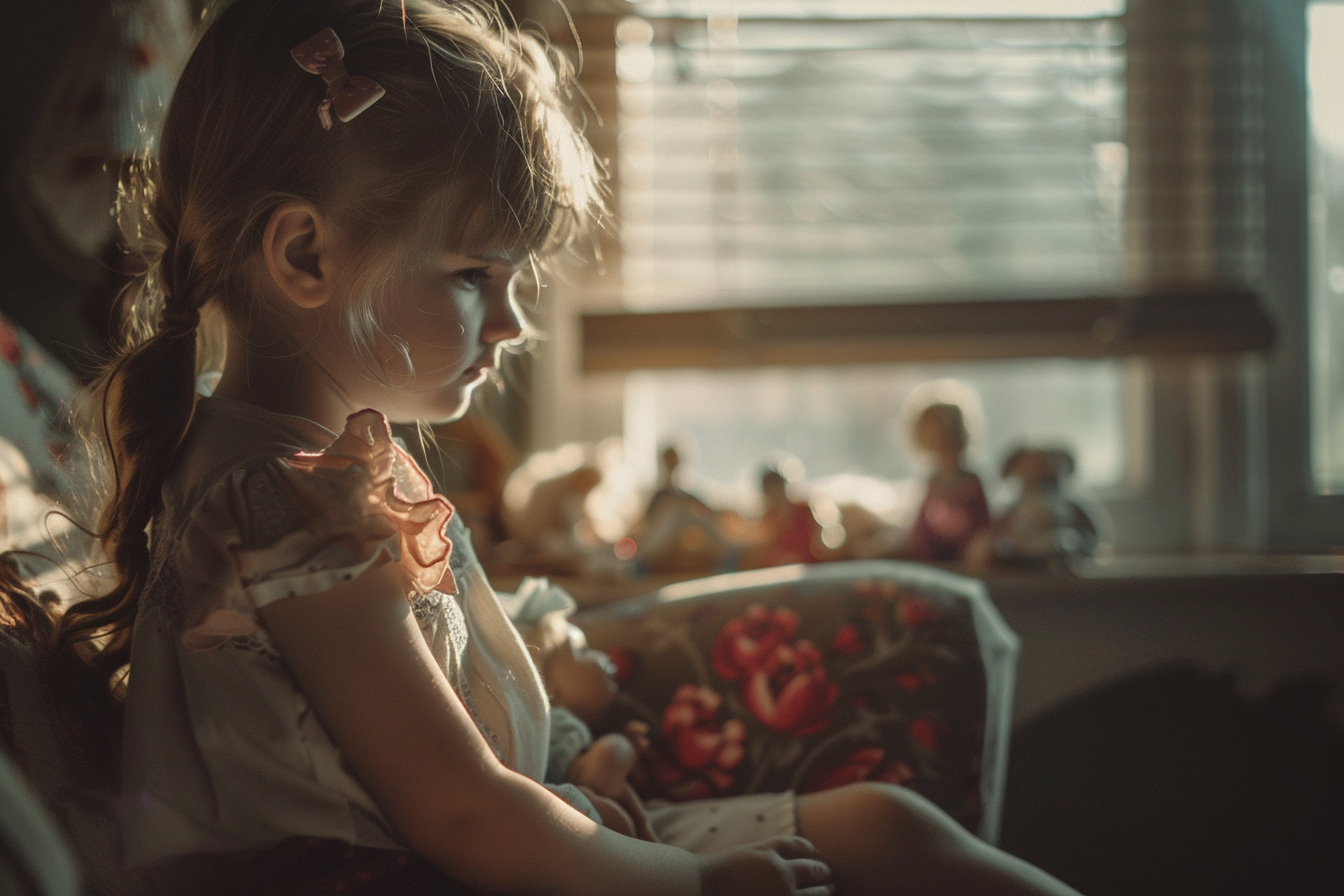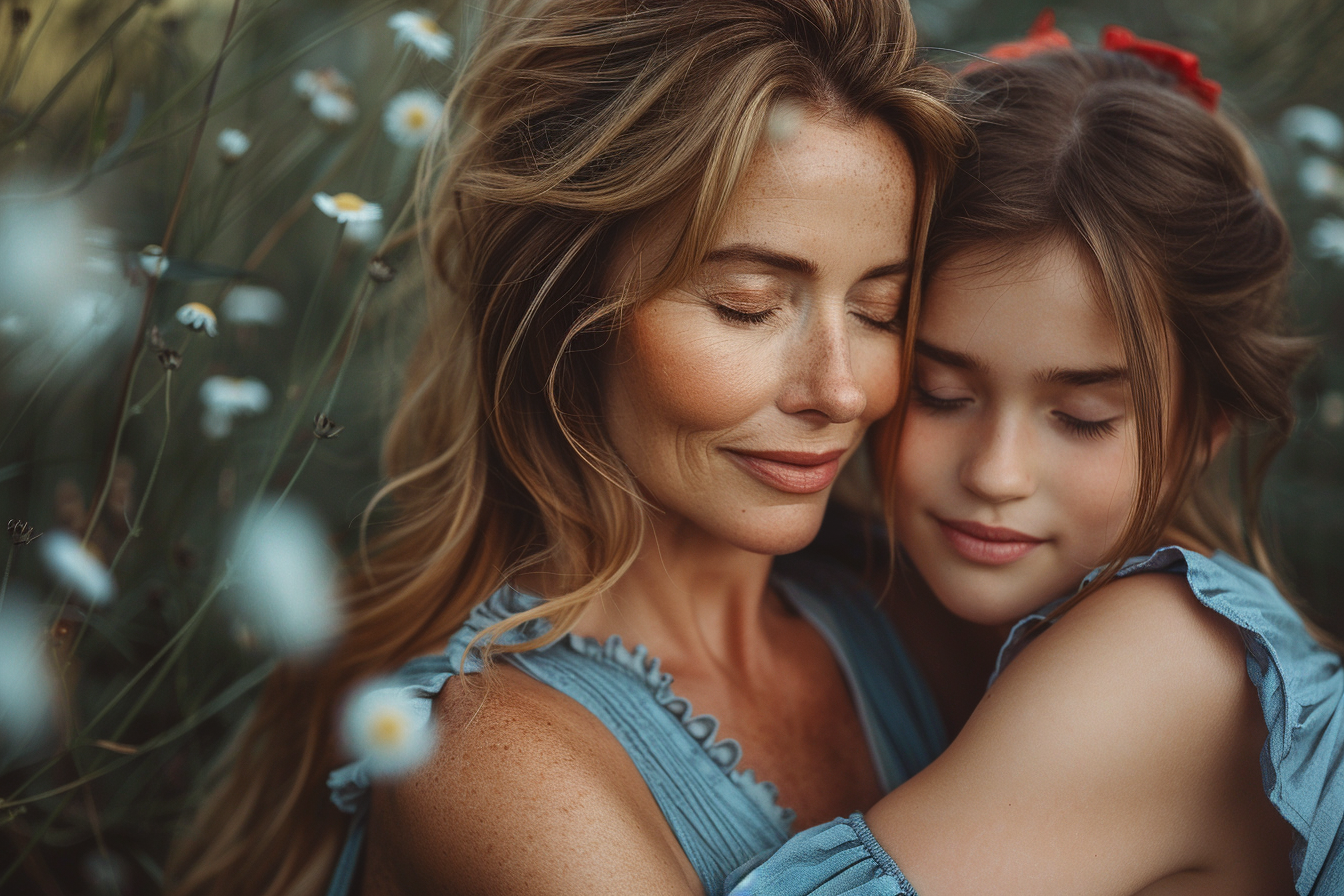
It’s a no-brainer that sleep is vital for one’s health. That is why so many researchers study the best way to get good quality shut-eye. However, forget chamomile tea and meditating before bed. According to new research, women sleep better next to dogs. That’s right; Canisius College in New York State conducted a study that found that canines make better-sleeping partners than humans or cats.
“We found that women commonly rate dogs as better bed partners than cats and human partners and report that their dogs enhance their sleep quality,” Christy Hoffman, Ph.D., animal behaviorist and lead researcher of the study.
Research Finds that Women Sleep Better Next to Dogs
Hoffman surveyed almost one thousand women living in the United States to come to these findings. The results showed that 55% of the participants shared their bed with at least one dog and 31% with at least one cat. Also, 57% of these women shared a bed with a human partner, while the rest did not. [1]
Hoffman also discovered why dogs seemed to make the best bed companions. The first reason is that dogs’ sleeping patterns, as opposed to cats, more closely resemble those of humans.
“The difference between dogs and cats is not surprising because dogs’ major sleep periods tend to coincide more closely with humans’ than do cats,’” said Hoffman.
However, while there may be benefits of these similar sleeping patterns, more research is needed to know for certain. But Hoffman has some ideas of how this could work.
“In comparison to human bed partners, dogs may be better at accommodating their human’s sleep schedule,” she said. “It’s not uncommon for human bed partners to go to bed at very different times and wake up at very different times. Such differences in partners’ schedules can certainly disrupt sleep. It may be that dog bed partners adapt more readily to their owner’s schedule than do human bed partners.”
Moreover, dogs require certain schedules and responsibilities, such as a morning walk. This kind of regime helps their owners maintain a routine, improving sleep quality as a result.
Stillness and Security
Additionally, dogs tend to stay stiff as they sleep. Anyone who’s slept with a fidgety partner knows how disruptive they could be. However, women in the study reported that their dogs stayed on the bed most of the night instead of felines, who tended to come and go.
“This suggests that cats may be more likely than dogs to create disruptions by moving on and off the bed during the night. In addition, we found that dog owners kept to more consistent bedtime and wake time schedules than cat owners and also tended to go to bed earlier and wake up earlier than cat owners,” Hoffman said.
Here’s the third and most important reason: Canines provide a sense of security to their owners. More so than with cats or even human partners.
“Some dog owners may take comfort in the thought that their dog will alert them in the case of an intruder or other type of emergency; furthermore, a dog’s bark may deter a potential intruder. A cat is less likely to take on this role, and so, may not provide psychological comfort in the same way a dog might,” said Hoffman.
The Best Partner for Quality Sleep
However, while the study suggests that dogs are the perfect slumber buddies, their benefits are subjective to each case. For example, a dog could snore or make the bed too hot. Additionally, there are many owners who find that their cats help them sleep.
Keep in mind that the research was based on how the volunteers perceive their pets’ effects on their sleeping quality and duration. As a result, more objective research is needed to definitively consider dogs the superior sleeping partners. However, Hoffman believes that these studies could be beneficial as many American households have pets.
“It will be valuable to continue this line of research so we can develop a clearer picture of the contexts under which pets and their presence in their owner’s bed may positively impact sleep quality, and the contexts under which co-sleeping with a pet may be detrimental to one’s sleep quality,” she said.
For instance, research has also shown that women sleep better while alone than with a human, but many believe in the opposite. Future research could use Fitbit-like devices to objectively track the sleep quality of people in different sleeping conditions.
New 1673

My Dad Replaced My Mom with My Best Friend – I Made Him Taste His Own Medicine
When Hannah’s Dad waltzed into her birthday party with her best friend on his arm, she was determined to make him pay. Little did he know Hannah’s plan would unexpectedly turn the tables at her graduation party.

Serious woman and birthday cake | Source: Midjourney
“Happy birthday, kiddo,” Dad said, but his words barely registered.
The room was full of balloons and banners, but everything started feeling suddenly wrong.
“What’s the fuss?” he asked, noticing people staring.
I couldn’t believe it was happening. Dad had walked into my 25th birthday party with my best friend, Jessica, as his plus one.

Older man with young woman | Source: Midjourney
“What is Jess doing with you?” I asked as soon as I recovered from the shock.
“What do you mean?” he chuckled. “We’re together, in love!”
“Are you serious? Mom is here, and everyone is watching us!”
He shrugged. “So what? I don’t care what she or anyone else feels; it’s her problem. This is MY LIFE. I want to have fun.”

Couple looking into each other’s eyes | Source: Midjourney
I glanced at Mom, standing alone with tears streaming down her face. She just turned and went inside, and I couldn’t stand that.
“If I knew you would do something like this, I would’ve never invited you!” I snapped, turning to Dad. “And you, Jess, how could you do this? You were my best friend!”
“I’m sorry, Hannah. But it sounds like a YOU problem if you can’t accept this.”
I was shocked.
“Leave!” I said. “Just get out! Both of you!”

Smug-looking woman | Source: Midjourney
“Hey, Hannah, you’re overreacting,” Dad scoffed. “It’s not like your Mom and I are together, and I brought someone new into our lives.”
“No, I’m not overreacting, Dad, and I don’t want to talk about this. You need to leave. This party is for me and Mom. And this is Mom’s house.”
“Fine, we’ll go.”
I watched as Dad walked out, and then I returned to Mom and hugged her tightly. “Mom, I’m so sorry. I didn’t know they’d—”
“It’s okay, sweetie. Thank you,” was all she said.

Sad woman among party guests | Source: Midjourney
It was hard for me to believe what had happened, but all I cared about was the faces of the other guests staring at my mom in pity and disbelief. I hated the way they were looking at Mom as if she were some helpless woman.
A week passed.
One Sunday morning, Mom and I sat on the couch in her cozy living room, sipping tea.

Two cups of tea | Source: Midjourney
I loved our little sessions where it was just the two of us. Usually, we’d bake one of Grandma’s recipes, but looking at Mom’s face, I knew she was still not over what had happened.
Dad and Mom had divorced only recently, and I know Mom still missed him. So, what happened on my birthday still bothered her.
“I’m really looking forward to graduation next month, Mom,” I said, trying to lift the mood. “It’s a big milestone for me.”

Woman wearing graduation hat | Source: Midjourney
“Oh, I’m so proud of you, Hannah,” Mom smiled, her eyes shining with pride. “You’ve worked so hard for this day.
“It’s just that… seeing Jessica with your father was hard,” she suddenly said, sighing sadly. “She’ll be graduating too, right?”
I reached over and took her hand, squeezing it gently.
“Yes, Mom. It was terrible. But you’re stronger than this. You deserve better.”

Sad elderly woman | Source: Midjourney
Mom looked at me, tears welling up in her eyes. “It’s just so hard, Hannah. I never expected this from Jessica. She-she was like a daughter, and now this…imagining them in bed…”
Mom broke down into tears, and I raced to her side to hug her.
“Your dad…” she sniffled. “What did he tell me when he was leaving? You’re too old, Caroline. You don’t excite me anymore. Oh, Hannah, how could he do this?”

Young woman consoling an older woman | Source: Midjourney
Mom wept into my shoulders, and I can’t tell you how it broke my heart.
“I didn’t either, Mom,” I said, trying my best to console her. “But we won’t let them hurt us anymore. You’re not alone in this. We’ll get through it together, okay?”
Mom was very disturbed after what happened at my birthday party, and I had a plan to set things right. It’s just that I couldn’t tell Mom about it right then.

Devastated elderly woman | Source: Midjourney
The following Thursday morning, I walked into the cozy café near the university, bustling with students and professionals.
The smell of coffee and chatter filled the air.
I spotted Tom at a corner table and waved.

Inside a cafe | Source: Midjourney
I remembered Tom from when I was young. He was one of Dad’s colleagues, always nice and kind. He used to visit us often, but then we moved across town, and those visits stopped. Seeing his familiar face brought back memories.
“Hi, Tom,” I said as I sat down. “It’s good to see you.”
“Wow, Hannah! You’ve grown up!” he chuckled. “It’s good to see you too. How are things?” he asked.

Young woman talking to older man at cafe | Source: Midjourney
“Busy, but exciting. Graduation is just around the corner,” I replied.
A week ago, when I contacted Tom on Facebook, I wasn’t very hopeful he would reply. But somehow, his name was the first to pop into my head, and I just gave it a try.
Luckily, he replied.
“By the way, I thought about your idea,” he said as I sipped my coffee. “I’m okay with that. Will your Mom agree?”

Woman drinking coffee | Source: Midjourney
“She will. Thanks. I appreciate all your help,” I said sincerely.
“You’re welcome, Hannah. Your mom deserves better, and so do you,” he replied.
We chatted about various things, recalling some sweet memories of when I was a little girl and Tom used to get me princess dolls. He was just the sweetest man from my childhood, and I had a brilliant plan brewing at the back of my mind.

A cute girl | Source: Midjourney
I didn’t realize how time flew by and the graduation day arrived.
I stood in Mom’s bedroom, surrounded by elegant dresses and makeup.
Mom held up a beautiful dress, and I nodded approvingly.
“I can’t believe my baby is graduating,” she said, zipping up my dress. “You look stunning, Hannah.”

Older woman helping younger woman get ready | Source: Midjourney
“Thanks, Mom. You look amazing, too. Tonight’s going to be special,” I replied, smiling.
Mom had put on a shimmering navy blue dress that hugged her figure gracefully. Her hair was styled in soft waves, and she wore delicate silver jewelry that complemented her look perfectly.
“I hope your dad behaves himself tonight,” she said, wearing her earrings.

Gorgeous older woman | Source: Midjourney
“Don’t worry about him, Mom. Just focus on having a good time. Everything will be fine,” I assured her.
Mom smiled, but I could see the worry in her eyes.
I squeezed her hand. “Really, Mom. Enjoy tonight. You deserve it. I’m so happy for you.”
“I will, sweetie. Thank you,” she said, giving me a warm hug.

Mother and daughter hugging | Source: Midjourney
I looked in the mirror, adjusting my dress and makeup. “Now, I gotta leave. See you soon,” I said, grabbing my bag.
“Alright, Hannah. See you there,” Mom replied, giving me a quick kiss.
As I left the house, I took a deep breath. The plan was set, and I felt ready. I knew tonight had to be perfect, not just for me but for Mom, too. This was our night, and I wouldn’t let anything ruin it.

Woman in graduation attire standing with other graduates | Source: Midjourney
When I arrived at the graduation hall, I took one last look in the mirror and straightened my cap and gown.
The room buzzed with excitement as graduates and their families filled the seats.
I scanned the crowd and spotted Dad arriving with Jessica. They looked confident, but I knew that would change soon.

Young girl in graduation attire posing with older man | Source: Midjourney
About 15 minutes later, Mom entered the auditorium with Tom. She looked stunning, and Tom looked dapper in a suit.
Seeing them together made me smile. They waved at me, and I waved back.
I could see shock clouding Dad and Jessica’s faces when they saw Mom happy with a guy about five years younger than her!
“Thanks for making it, Tom. Mom, you look gorgeous!” I said, hugging her.

Good-looking couple | Source: Midjourney
It was then Dad’s voice cut through.
“Tom? What are you doing here?”
We turned to see him with Jessica behind him.
Tom put an arm around Mom. “Supporting a dear friend and her daughter,” he said.

Happy couple | Source: Midjourney
“Didn’t you mention he was your colleague? How did this happen?” I heard Jessica whispering to Dad, and I couldn’t help but smile because my plan was successful.
“Well, Mom and Tom have been catching up lately. They realized they have a lot in common,” I said, grinning.
Dad looked flustered. “I see,” he said. “Well, it’s… nice to see you, Tom.”

Serious-looking man | Source: Midjourney
Tom smirked slightly. “Nice to see you too, Robert. Life takes interesting turns, doesn’t it?”
As the evening went on, Mom and Tom looked genuinely happy together. They laughed and danced, looking like a perfect couple. Jessica tried to keep up appearances, but her discomfort was evident.
Dad couldn’t hide his frustration either. His eyes kept darting towards Mom and Tom, and I could see the wheels turning in his head.

Couple looking happy together | Source: Midjourney
Before leaving, Mom hugged me tightly. “Thank you for everything, sweetheart. I’m so proud of you.”
“I’m proud of you too, Mom,” I said, smiling. “You deserve all the happiness in the world.”
As I watched Mom walk away with Tom, I knew Dad regretted his choices. He realized too late that he had lost the best thing in his life. I also saw he pushed Jess away when she asked him for a dance, and I laughed.
My plan to show Dad that Mom could be happy without him worked perfectly. Mom and Tom fell in love and are now together. I couldn’t be happier for her.

A happy family | Source: Midjourney



Leave a Reply